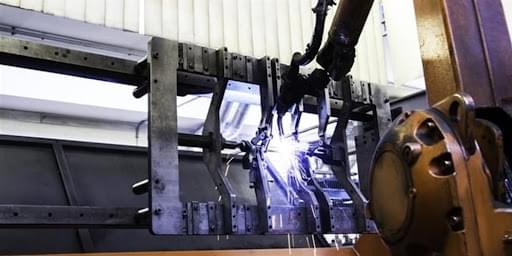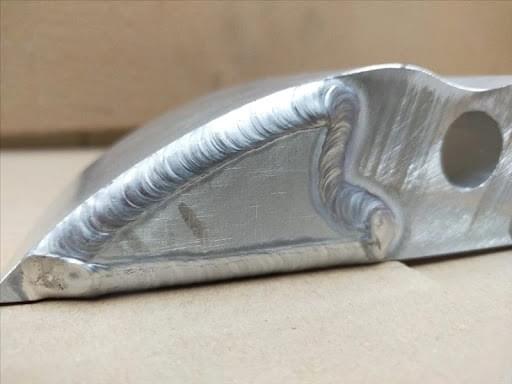Sheet metal welding: tips and suggestions for the industrial process

When it comes to sheet metal welding, having the right techniques and tips at your disposal is crucial for achieving strong and reliable welds. As a professional in the industry, you understand the importance of precision, efficiency, and durability in welding operations. In this comprehensive guide, we will delve into the world of industrial sheet metal welding, from preparation and joint design to choosing the appropriate welding methods:
- What is sheet metal welding?
- Preparation for sheet metal welding
- Choosing the right welding method: our tips
- Sheet metal welding tips for industrial applications
What is sheet metal welding?
Sheet metal welding is a specialized process used in various sectors, such as automotive, aerospace, manufacturing, and construction. It involves joining thin metal sheets using heat and pressure, with the ultimate goal of creating strong and structurally sound welds capable of withstanding rigorous applications. Welding operations demand a high level of expertise, attention to detail, and adherence to industry standards and regulations, which Minifaber can guarantee.
Preparation for sheet metal welding
Preparation is a crucial aspect of industrial sheet metal welding. To ensure successful results, every metalworking company should follow these steps:
- Surface cleaning and coating removal: Thoroughly clean the sheet metal surface to eliminate dirt, grease, and other contaminants that can compromise the quality of the weld. In industrial settings, where the scale of operations is larger, use automated cleaning methods or specialized equipment for efficient and consistent results. Additionally, remove any protective coatings from the sheet metal using appropriate methods, such as shot blasting or chemical stripping, to expose the bare metal for welding.
- Fit-up and fixturing: Proper fit-up and alignment are critical in sheet metal welding. Utilize advanced measuring and alignment tools to ensure precise positioning of the sheets. Implement fixtures, clamps, or welding jigs to securely hold the sheets in place during welding, reducing the risk of misalignment or movement.
- Material preparation: In metal welding, it is essential to consider the specific characteristics of the materials being welded. This includes understanding the metallurgical properties, thickness, and composition of the sheet metal. Proper material preparation, such as edge beveling or edge conditioning, may be necessary to optimize weld quality and penetration.
Choosing the right welding method: our tips
Sheet metal welding often requires specialized welding methods to meet stringent quality and efficiency standards. Here are a few commonly used techniques:
- Gas Metal Arc Welding (GMAW): GMAW, also known as MIG welding, is widely employed in sheet metal welding due to its versatility and high productivity. It utilizes a consumable wire electrode and shielding gas to protect the weld pool from atmospheric contamination, ensuring clean and reliable welds.
- Gas Tungsten Arc Welding (GTAW): GTAW, or TIG welding, is preferred for industrial applications that demand exceptional precision and weld quality. This method uses a non-consumable tungsten electrode and can be combined with filler metal if necessary. GTAW is particularly suitable for welding thin sheet metals where control and aesthetics are critical.
- Resistance Spot Welding (RSW): RSW is a widely adopted method in sheet metal welding, especially in high-volume production lines. This process uses electric current and pressure to create localized heat and join the metal sheets at specific points. RSW offers speed and efficiency, making it an excellent choice for repetitive welding operations.

Sheet metal welding tips for industrial applications
Now that we have covered the basics, let's explore some essential tips to boost your industrial sheet metal welding skills:
Tip 1 -Process optimization: Continuously strive to optimize your welding processes by analyzing variables such as welding parameters, travel speed, and consumable selection. Implement process monitoring and control systems to ensure consistent weld quality, reduce rework, and enhance productivity.
Tip 2 -Welding procedure qualification: In industrial settings, it is crucial to establish and adhere to qualified welding procedures. Conduct welding procedure qualification tests (WPQT) in accordance with relevant industry standards and regulations. This ensures that the welding procedures are optimized for the specific sheet metal materials and meet the required mechanical and metallurgical properties.
Tip 3 -Weld inspection and quality control: Implement comprehensive inspection and quality control measures to identify and address potential welding defects. To detect internal flaws, use non-destructive testing methods, such as ultrasonic or radiographic testing. Perform visual inspections and dimensional checks to verify weld integrity and conformity to specifications.
Tip 4 – continuous training and certification: Stay updated with the latest advancements in industrial sheet metal welding through continuous training and professional certifications. Encourage your workforce to participate in relevant welding seminars, workshops, and certification programs to enhance their knowledge and skills. This investment in education and skill development leads to improved welding performance and overall operational excellence.
Sheet metal welding demands precision, efficiency, and adherence to rigorous quality standards. By implementing the tips and techniques discussed in this guide, you can elevate your welding skills and ensure the production of high-quality and durable welds.
